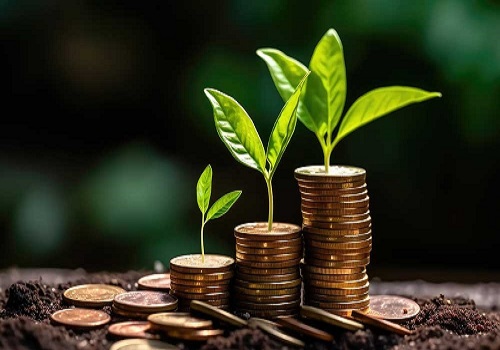India's Q1 GDP logs 13.5% growth, experts say lower than expected

India's economic growth rose to 13.5 per cent in the first quarter of the current fiscal (2022-23), a huge jump from 4.1 per cent growth recorded in the final quarter of 2021-22.
However, experts said that the GDP growth number was lower than what the market had expected earlier.
This is the first double digit growth in GDP figures in a year, as the last double digit growth was 20.1 per cent recorded in first quarter of 2021-22.
"Real GDP or Gross Domestic Product (GDP) at constant (2011-12) Prices in Q1 2022-23 is estimated to attain a level of Rs 36.85 lakh crore, as against Rs 32.46 lakh crore in Q1 2021-22, showing a growth of 13.5 per cent as compared to 20.1 per cent in Q1 2021-22," a statement issued by National Statistical Office (NSO) said.
The 13.5 per cent growth in the first quarter of the current fiscal is below Reserve Bank of India's (RBI) forecast of 16.2 per cent.
Rating agency ICRA had projected a growth of 13 per cent in the first quarter of the current fiscal.
After recording a 20.1 per cent growth in the first quarter of 2021-22, GDP growth had consistently fell during the entire quarter.
In the second quarter of 2021-22, it slid to 8.4 per cent, in the third quarter, it further fell to 5.4 per cent while in the fourth quarter of the previous fiscal, it came down to 4.1 per cent.
The RBI has projected the economy's growth at 7.2 per cent for the current financial year.
"The next few quarters will see slower growth as the base effect wanes. While the ongoing broad-basing of domestic economic activity is supportive, the key risks is slowing global growth, which would curb India's exports and create uncertainty in private capex plans. These would put downward pressure on our GDP growth forecast of 7.3 per cent for the current fiscal," said Dharmakirti Joshi, Chief Economist, CRISIL Ltd
"First-quarter GDP growth came in lower than expected. High net imports and weaker government consumption expenditure kept overall growth soft," Joshi added.
According to Joshi, private consumption is improving, with urban demand getting support from contact-intensive services. Had it not been for high inflation and subdued rural demand due to negative real rural wage growth, private consumption would have grown faster.
Reacting to the GDP numbers, Nikhil Gupta, Chief Economist, Motilal Oswal Financial Services Ltd said it was lower than the market consensus.
Assuming no change in 2Q-4Q projections, the GDP data suggests that the RBI's FY23 growth forecast will be revised down to 6.7 per cent from 7.2 per cent earlier, Gupta said.
"Overall, it confirms that growth recovery is not so strong in India. It ideally implies that monetary tightening should be not very aggressive. However, it appears that the terminal repo rate will be 5.75-6 per cent in this cycle with 1-2 more rate hikes, ending the cycle in Dec'22," Gupta added.
According to Raghvendra Nath, Managing Director, Ladderup Wealth Management, higher interest rates can hit economic activities in the next few quarters which may slowdown the pace of India's economic growth.
"We can expect another rate hike of 25 to 50 basis points in the coming months. Thus, despite India remaining the world's fastest growing economy, all eyes are place on global recession fears and rising borrowing costs," Nath added.
Madhavi Arora, Lead Economist, Emkay Global Financial Services, said that the strong YoY growth partly also is led by favourable base effect, as 1QFY22 growth was severely impacted by the Covid Delta wave.
Arora said that the GDP growth is largely a story of service sector rebound which also was visible in the private consumption.
"However, manufacturing has remained a disappointing print, while utilities have remained resilient since the pandemic normalised," she added.
Going ahead, Arora said there may be secular downturn in the growth print as the base effect fades and the economy also slows sequentially.
Even as recovery in domestic economic activity is yet to be broad-based, global drags in the form of still-elevated prices, shrinking corporate profitability, demand-curbing monetary policies and diminishing global growth prospects weigh on growth outlook, she added.
















